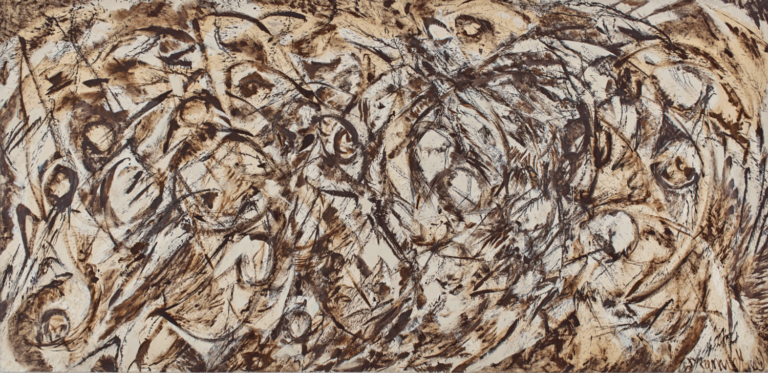James Barry Painter: 18th Century Irish Neoclassical Artist
Born: 11 October 1741, Cork, Ireland
Death: 22 February 1806, London, England
Art Movement: Neoclassicism, Romanticism
Nationality: Irish
Teacher: John Butts
Institution: Royal Dublin Society
James Barry Painter: 18th Century Irish Neoclassical Artist
Early Years and Artistic Development
James Barry showed artistic talent from a young age. His early experiences in Ireland and later studies in Italy shaped his development as a painter.
Formative Years in Cork and Dublin
James Barry was born in 1741 in Cork, Ireland. He grew up in a modest home, the son of a sailor and shopkeeper.
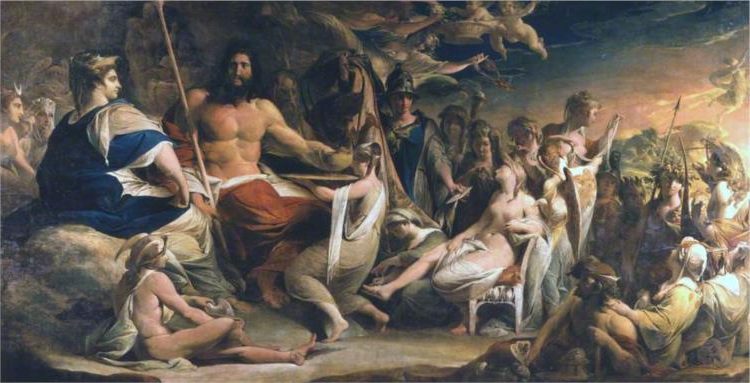
The Birth of Pandora by James Barry
As a boy, Barry spent time drawing and sketching. He caught the eye of local artist John Butts, who gave him some basic training.
At age 17, Barry moved to Dublin to study at the drawing school of the Royal Dublin Society. There, he won prizes for his work. His talent impressed many, including future philosopher Edmund Burke.
Barry’s early paintings focused on Irish history and mythology. He created works like “The Conversion of the King of Cashel by St. Patrick” during this time.
Influence of Edmund Burke and Study in Italy
Edmund Burke became Barry’s patron and friend. In 1765, Burke helped Barry travel to Italy to study art. This trip changed Barry’s life and art.
In Rome, Barry saw masterpieces by Renaissance artists. He studied ancient sculptures and paintings.
The grandeur of Italian art inspired him deeply.
Barry spent 5 years in Italy. He filled sketchbooks with drawings of classical art. He also painted his own versions of famous works.
This time formed Barry’s style as a history painter.
Barry returned to England in 1771 with new skills and ideas. His Italian studies set the stage for his later grand historical paintings.
Career Highlights and Notable Works
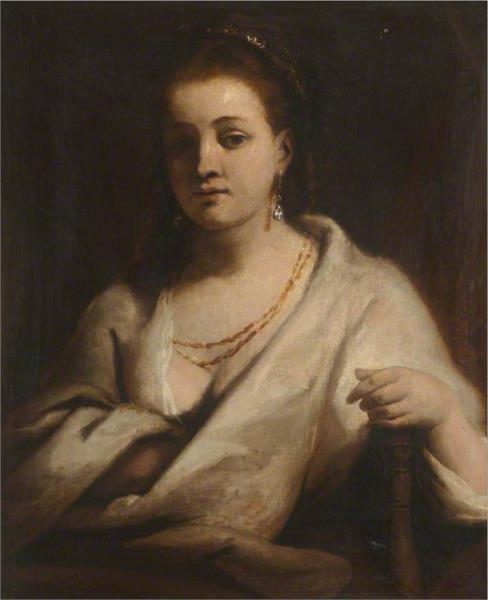
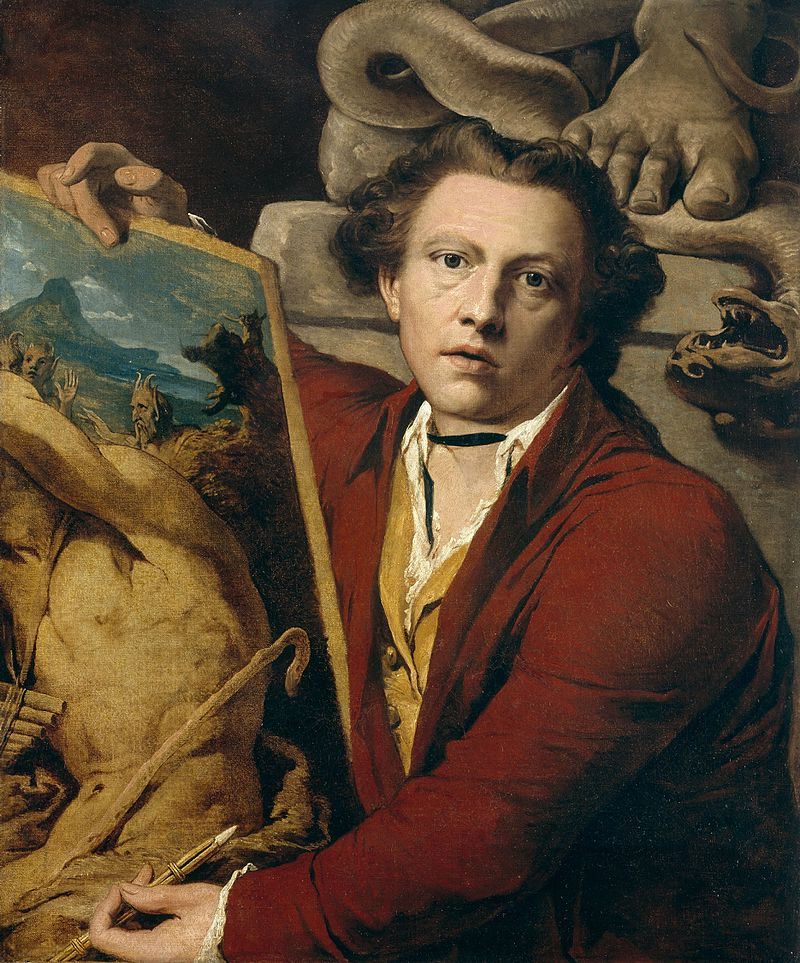
James Barry’s career was marked by significant achievements and influential artworks. He held prestigious positions and created monumental pieces that left a lasting impact on British art.
Professor of Painting at the Royal Academy
Barry became a member of the Royal Academy in 1773. In 1782, he was named Professor of Painting at the institution.
This role gave him a platform to share his artistic ideas and teach future painters. Barry’s lectures on art were well-known and helped shape the thinking of many young artists.
Major Commissions and Exhibitions
Barry’s most famous work is “The Progress of Human Culture.” This series of six large paintings was created for the Great Room of the Royal Society of Arts in London.

A Grecian Harvest Home, or Thanksgiving to the Rural Deities, Ceres, Bacchus
The project took him seven years to finish, from 1777 to 1784. It shows Barry’s skill in painting complex historical and mythological scenes.
In 1983, the Tate Gallery in London held a big exhibition of Barry’s work. This show brought new attention to his art and place in British painting history.
Contributions to the Royal Society of Arts
Barry’s work for the Royal Society of Arts was a major part of his career. The “Progress of Human Culture” series is still on display in their Great Room.
These paintings cover topics from Greek myths to modern industry. They show Barry’s wide knowledge and big ideas about art and society.
Barry also made portraits of famous people like Edmund Burke. His art often mixed history painting with current events, making it unique for its time.
Artistic Style and Legacy
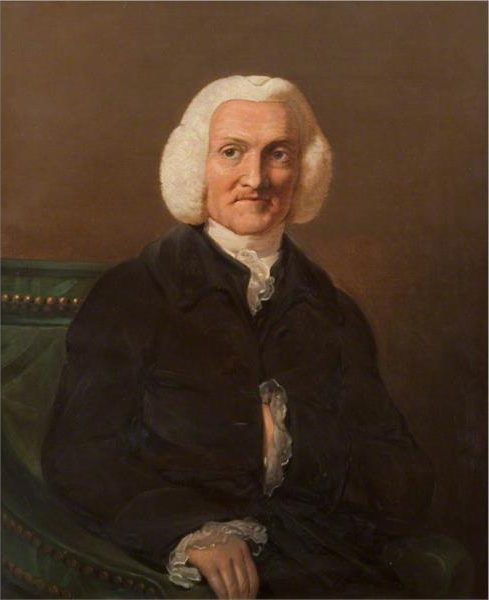
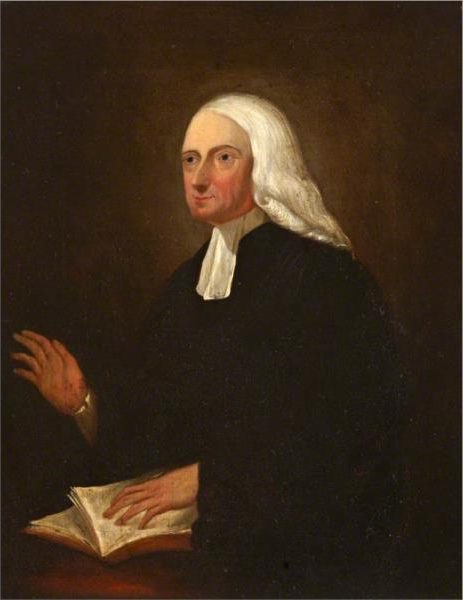
James Barry’s unique artistic vision blended classical influences with romantic ideals. His grand historical paintings and innovative techniques left a lasting impact on British art.
Romanticism and the Grand Style
Barry embraced the grand style of history painting popular in the 18th century. He painted large-scale works with classical and mythological themes. Barry looked to Renaissance masters like Raphael, Michelangelo, and Titian for inspiration.
His style mixed neoclassical forms with romantic drama and emotion. Barry used bold colors and dynamic compositions in works like “The Progress of Human Culture.” He aimed to elevate British art through moral and heroic subjects.
Barry’s art celebrated human knowledge and cultural achievement. He saw painting as a way to teach and inspire viewers. This aligned with Romantic ideals about art’s power to transform society.
Influence and Reception
Barry’s work divided critics in his lifetime. Some praised his ambition and skill. Others found his style too intense or his subjects obscure. His fierce independence often put him at odds with patrons and institutions.
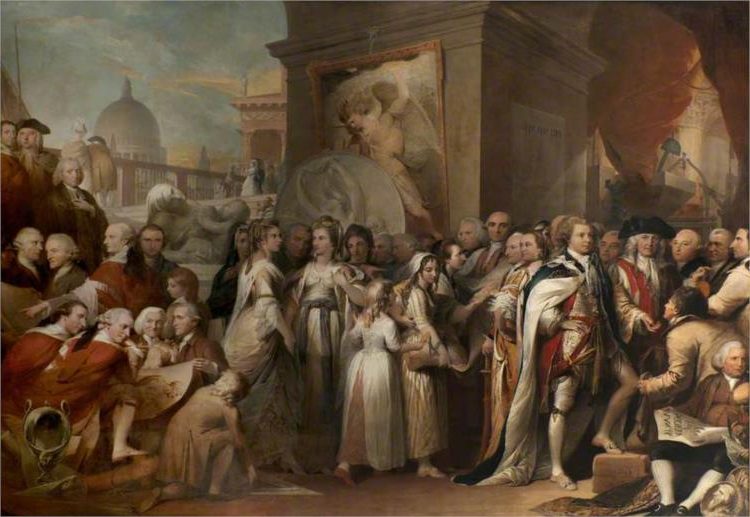
The Distribution of Premiums in the Society of Arts (1801) by James Barry
Barry influenced later Romantic painters like William Blake. Both artists valued individual vision over popular taste. Barry’s writings on art theory also shaped ideas about painting’s purpose and potential.
His legacy grew after death. Art historians now see Barry as an important transitional figure. He helped bridge 18th-century neoclassicism and 19th-century Romanticism in British art.
Frequently Asked Questions
James Barry was an influential Irish painter known for his historical and mythological works. His art explored grand themes and made significant contributions to Neoclassicism and Romanticism.
What are the notable works of James Barry?
Barry’s most famous work is “The Progress of Human Culture.” This series of six large paintings hangs in the Great Room of the Royal Society of Arts in London. Other notable pieces include “The Baptism of the King of Cashel by St. Patrick” and “The Temptation of Adam.”
What impact did James Barry have on the art community?
Barry challenged artistic norms of his time. He focused on creating art based on his own principles rather than catering to patrons’ wishes. This approach influenced later Romantic artists who valued individual expression over traditional standards.
Can you provide a biography of James Barry, the artist?
James Barry was born in Cork, Ireland in 1741. He studied art in Dublin and later moved to London. Barry traveled to Italy to study classical art. He returned to London in 1771 and became a member of the Royal Academy. Barry died in 1806.
How has James Barry contributed to the Romantic period in painting?
Barry’s work bridged Neoclassicism and Romanticism. His grand historical scenes and mythological subjects paved the way for Romantic painting. Barry’s focus on emotion and individual vision in art aligned with Romantic ideals.
What themes are prevalent in James Barry’s artwork?
Barry often painted historical and mythological scenes. He explored themes of human progress, culture, and morality. His work also touched on religious subjects and Irish history. Barry’s art often had deep symbolic meanings.
Where are James Barry’s paintings currently displayed?
Many of Barry’s works are in London. His “Progress of Human Culture” series is at the Royal Society of Arts. Other paintings are in the Tate Britain and the National Gallery of Ireland in Dublin. Some pieces are also in private collections.






